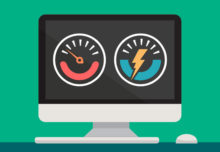
Mention buying refurbished computers to the average man in the street and their first thoughts may be “poor quality”, “unreliable” or “broken”. Many people are under the assumption a refurbished computer is the equivalent of Frankenstein’s Monster – a computer assembled from bits and pieces of other machines.
Whilst for some goods this would be an accurate assessment, in the computing world the reality is markedly different. Refurbished computers can take on all kinds of different forms, that’s why it’s so useful to follow a checklist before buying. By ticking off the boxes below, you can ensure you get your hands on the right kind of machine, no matter your circumstances.
Price
In today’s economy few organisations have the luxury of uncapped IT budgets. In order to get the best value for money, avoid overpaying for equipment and you also need to swerve ‘specification overkill’ i.e. paying for unnecessary bells and whistles. The bulk of the price tag for a brand new computer comes from having the latest and greatest generation processor installed but nowadays, many 2-3 year old models are more than capable for most business users needs.
- Your investment must deliver value for money from day 1 but also over the life of the computer. A refurbished computer typically costs half the price of a new device with similar specifications. So why pay double when you don’t need to?
Product
What exactly are you buying? When ordering a desktop computer it’s logical to assume you’ll receive everything you need to run the machine, for example the mouse, keyboard and monitor. However, with a refurbished computer, this might not necessarily be the case. Check the contents to make sure you understand exactly what you’re getting.
- The last thing anyone wants is to buy a new desktop computer only to find a monitor is not included.
- Before buying refurbished equipment remember to ask this question, ‘What’s in the box?’.
Processor
The biggest difference between refurbished computers and brand new machines is the generation of processor. New machines contain the latest generation of processors, whereas refurbished machines are often two or three generations behind. However, the specifications of a 2-3 year old refurbished, ex-corporate desktop or laptop far exceed the needs of most routine business users. There are advantages to buying the latest models but in many cases it’s unnecessary.
- Is the extra processing power creating tangible value?
- Does the extra processing power justify the price?
Practicality
Under certain circumstances buying refurbished hardware makes the most sense, commercially and practically. For example, computers in education need to withstand heavy-handed treatment from unforgiving students. In our experience computers for schools, colleges, polytechnics and universities are subjected to substantial physical abuse and warranty claims for repairs or replacements are common. What is the most practical choice for your organisation?
- Does it make sense to pay a premium for brand new computers will take a battering from day one?
- Desktop, laptop or tablet? Will the equipment be used in the field or in a traditional office environment?
The bottom line
If you need to invest in refurbished computer equipment (whether that be desktop PCs, laptops or tablets) for your organisation there’s a key set of criteria you’ll need to assess in order to find the best machines. There are several prevailing myths associated with refurbished computing equipment, many simply don’t stand up to scrutiny. If you’re on the market for refurbished computers for your organisation get in touch.



